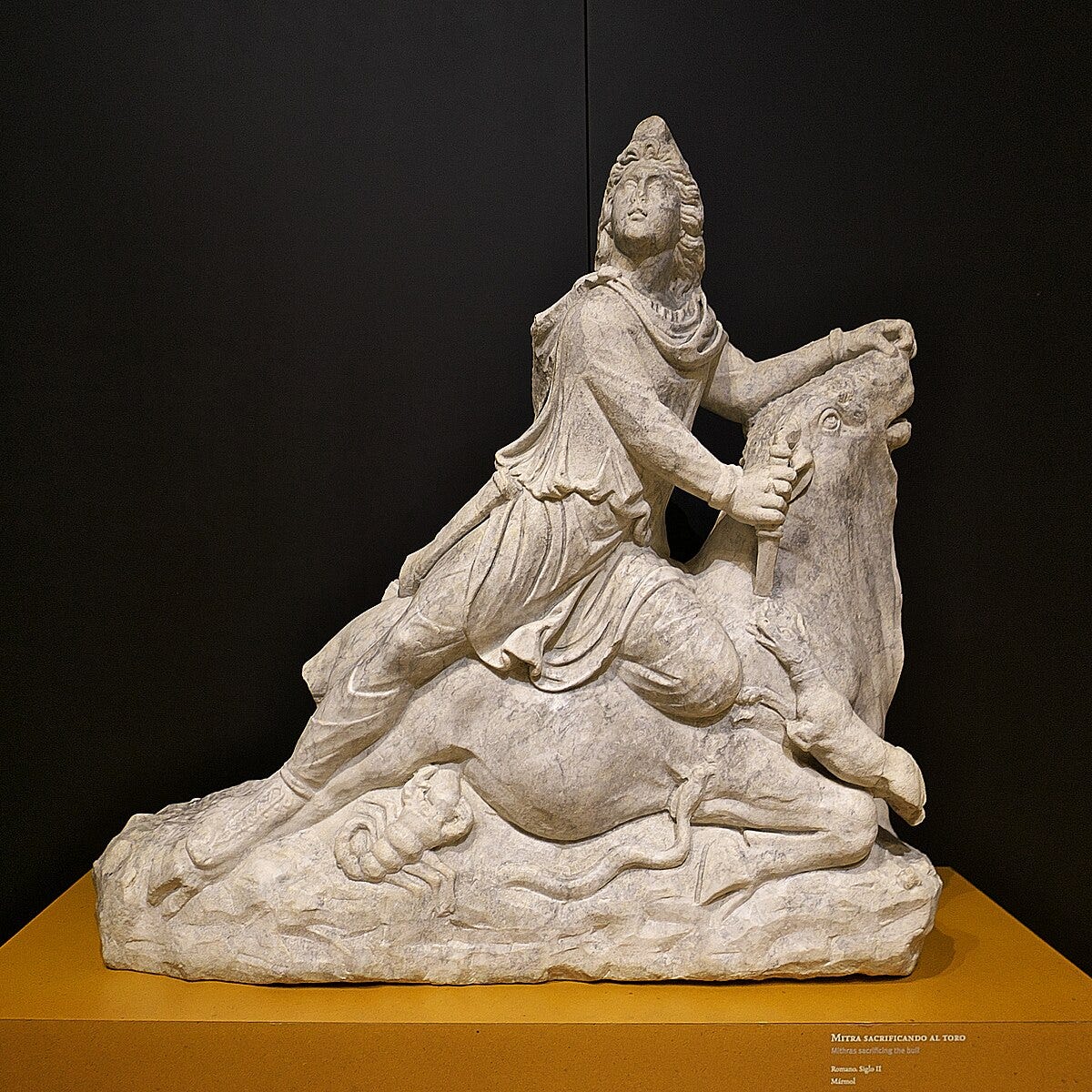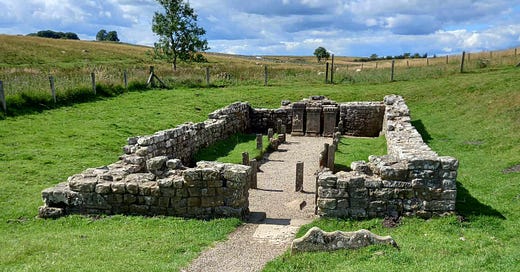One of my favourite ancient sites that is within a reasonable traveling distance from my home is the Mithraeum at Carrawburgh Fort, along Hadrian’s Wall. It is sat in the middle of the grazing land of what seems to be an absolute army of sheep, so even getting to it feels like a mini-adventure.
Not much of the site survives, except for some of the walls and three altars (pictured at the far end of the temple in the picture below). But what I love about it is what it represents. Here, at the edge of what was the Roman world of northern England, roughly 300 years before the appearance of ‘Anglo-Saxon’ culture on these lands, we have proof of a religious tradition with roots in ancient Persia!
The cult surrounding Mithras is shrouded in mystery because it was a secretive affair. Initiates were not allowed to talk about what they saw or took part in during the rituals. As such we have no written source that explains what went on; in fact we have very little evidence for the mythology of Mithras either. This has made him, and his cult, ripe for over exaggeration and pseudo-history over the years.
As we near Christmas, you may start to hear or see claims that Mithras is the origin of the Christmas story. That Mithras was born of a virgin in a stable and visited by wise men, to later die on a cross and be resurrected days later. There is no evidence to support any of this and the only evidence we have shows that he was in fact born from rock - not a woman, let alone a virgin.
One claim that is a bit more complicated to debunk - but is equally not true - is the idea that Jesus’ traditional birth date of the 25th December was taken from Mithras.

It is hard to overstate just how little we know about Mithras and the cult surrounding him. In fact, all we really ‘know’ are two stories: his birth from a rock, and his killing of a bull. If these sound oddly vague descriptions of myth, that’s because they are. We only know about these stories because of art work recovered from other Mithraea around the world. We don’t really know what Mithras had against this poor bull, or why he keeps on killing it (presumably it is a sacrifice). But we know it was obviously important to his followers.
Beyond this, we know next to nothing. So the idea that we have the date of his birth is just fantasy.

I wrote a longer article for my fact-checking website Bad Ancient, if you are interested in what the evidence does and does not say on these matters, along with the origins of the claims, give this a read.
Always best to be prepared during the busiest time of year for psuedo-history nonsense!





Personally, I require but one piece of evidence that Christians stole Mithras’ birthday.
That piece of evidence is a single polemic or personal correspondence, from the time, wherein a dissenting Christian writer calls the official church hierarchy a nest of heretics and blasphemers.